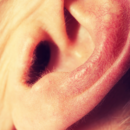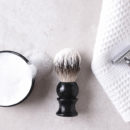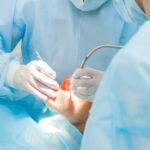
The practice of male circumcision usually stems from cultural or religious beliefs, which is perhaps why the global rates vary so much. For example, an estimated 26.6% of Australians have circumcised penises, while in America that number skyrockets to about 71%.
Many males get circumcised as infants, but it is certainly not unheard of for adult males to go through with the procedure later in life. Whether you’re an adult male considering the procedure for cultural, religious, or even medical reasons, you are not alone.
Chances are, you have some questions about getting a circumcision as an adult. How does it work? How long does it take to recover and what kind of aftercare is required of you?
Read on to have all of your adult male circumcision questions answered.
What is the Process for Circumcision as an Adult?
To begin with, you will need to have a consultation with your doctor to find out if circumcision is the right call for you. There, you can discuss your medical history, your allergies, and current medications. All of this will help your doctor determine how to undergo the procedure.
Before the procedure begins, you will receive either general anesthesia for full sedation or local anesthesia, depending on your health and preference. Either way, you will not feel any pain during the procedure.
Next, your doctor will pull the foreskin away from the head of the penis and back onto the shaft. They will take measurements to determine how much of the foreskin needs to be removed.
For adult male circumcisions, a scalpel is used to remove the designated amount of foreskin. This skin will then be reattached, usually with stitches, to the shaft. The penis will be wrapped in a dressing to protect the stitches as they dissolve.
Most men who undergo adult circumcision will be able to go home the same day.
What Should You Expect During Recovery?
Total recovery time should take about two to three weeks. During this time, you will want to minimize physical activity and strain. Refrain from sexual intercourse and masturbation for at least six weeks, even if the stitches have dissolved and any discomfort has ceased.
Like any mildly invasive surgery, you will probably experience bruising, swelling, and discomfort in the first few days after the procedure is complete.
The protective dressing will need to stay clean. Otherwise, you are exposing yourself to the risk of infection, which will require medical attention and lengthen your recovery time. Your doctor may expect you to come back in at some point within the first week of recovery to have the dressing replaced.
What Aftercare is Required of You?
There are some steps and precautions you should take to ensure a speedy recovery and proper healing.
Take any pain medications or antibiotics as prescribed by your doctor. You can also lessen the discomfort by applying an icepack to the groin area for up to twenty minutes at a time, but make sure to wrap the pack in cloth.
Wear underwear that will support the penis and hold it relatively still. To reduce pain and swelling, you will want the penis to remain flat with the head pointed towards the bellybutton.
When the protective dressing is removed, you can shower again, but you will need to be careful with the groin area. Don’t scrub it or wipe it with a sponge or towel and always pat it dry after bathing. Refrain from using scented soaps until you have healed, as the chemicals in them can cause irritation.
What Else Should You Know About Undergoing Circumcision as an Adult?
There are a few more questions you may have about benefits, risks, and cost that we’d like to address. However, it’s important to note that much of this information is subjective or debated in the scientific community.
To begin with, the cost of an adult circumcision will vary by region and even by the doctor’s office you go to. This informative article will provide some insight into the way the cost of circumcision is broken down.
If you are getting an adult male circumcision for cultural or religious purposes, the benefits will be personal and subjective. However, there are some possible medical benefits.
Possible Medical Benefits
Some research has shown that circumcisions can help protect men from contracting STDs. That being said, contraceptives are still required to reduce the risk of disease.
Circumcisions can also reduce irritation or infection caused by a foreskin that doesn’t pull back from the penis properly. That being said, it is a misconception that circumcised penises are naturally more hygienic. Both circumcised and uncircumcised penises need to be cleansed of oil, bacteria, and dead skin cells.
Possible Risks
There are some risks that you should be aware of before getting a circumcision as an adult that could potentially require corrective surgery.
The foreskin may be cut too short or left too long. Beyond creating cosmetic issues that may be bothersome to you, this could lead to complications with the healing process.
If the incision site or the stitched area does not heal properly, this can cause skin problems and leave scarring around the head of the penis.
Finally, the foreskin may not reattach properly to the shaft of the penis. This can cause discomfort and may require additional surgery.
More common risks include bleeding around the stitched area and the swelling and discomfort we mentioned earlier. If these things occur in the first few days, there is likely no cause for alarm. However, if they continue for days on end, you will need to visit your doctor.
The Decision is Yours
It may be less common to get a circumcision as an adult than as an infant, but that doesn’t mean it’s impossible or even unusual. In the end, as long as you are medically cleared for the procedure by a doctor, the decision is entirely yours!
Check out the rest of our blog posts for more useful and interesting information for men.

























